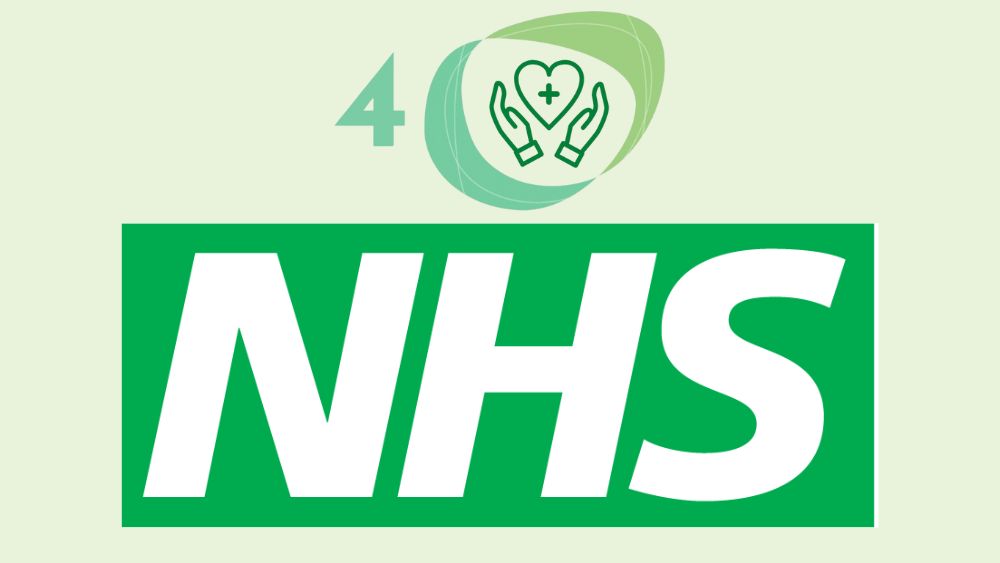Health services may not be obvious greenhouse gas emitters, but are leading the way in the transition from voluntary greenwashing to mandatory carbon reporting.
See Through Carbon’s Pilot 4 focuses on UK health services. This article explains why.
Why health services?
UK/Health Services is the fourth of seven pilots designed to test See Through Carbon’s innovative approach to providing accurate, free, open-source and transparent carbon reporting, auditing and consultancy. See Through Carbon serves See Through’s broader mission to speed up carbon drawdown.
Details of the local, scope, and incentive methods of the different pilots are summarised in an overview article that explains why, for example:
- a plumber (Pilot 1) does not have the carbon insetting options available to a farmer (Pilot 6)
- a music venue (Pilot 2) has nowhere near the scale and complexity of Scope 2 & 3 water-utility energy calculations as a cotton weaver (Pilot 7)
- a multinational (Pilot 3) or local government (Pilot 5) has much more complex Scope 3 reporting challenges than a health services contractor (Pilot 4)
As we live in an interconnected world, all these different pilots ultimately overlap. For example, a small business in Wiltshire (Pilot 1) might also:
- Function as a music venue (Pilot 2)
- Supply a multinational (Pilot 3)
- Work for local government (Pilot 5)
- Produce food (Pilot 6)
- Sell clothes (Pilot 7)
So why did See Through Carbon select the world of health services – clinics, hospitals, consultancies, care homes and other related social services – for its Pilot 4 (UK/Health Services)?
Scale
The UK’s National Health Service (NHS) is huge, diverse and disparate, reaching every UK postcode and citizen. As the first comprehensive national health provider, employing staff from around the world, it has a global influence.
Focus
Unlike in many countries with decentralised or largely privatised health systems, the NHS’s dominant role makes the UK’s health services supply chain unusually cohesive and hermetic. This makes it suitable for a standalone pilot to test key functionalities of STC’s Scope 3 reporting system.
Timing
The NHS is relatively advanced in the process of moving from a voluntary-based system of carbon reporting, to a mandatory one. As an arm of government, the NHS is leading the way in percolating compulsory carbon reporting to the lowest level of Small and Medium Enterprises (SMEs).
Scale: the NHS big beast
With 1.7 million employees, the NHS is not only the UK’s biggest employer, but the 5th biggest employer in the world (behind US multinationals Walmart and McDonalds, and China’s railways and police).
The NHS’s US$210 Billion annual budget accounts for 10% of the UK’s entire GDP. This not only gives its policy choices a significant direct impact on its supply chain and ecosystem, but has a ripple effect on indirectly-related sectors.
Critically, the NHS has a clear hierarchy and supply chain, conveniently and clearly divided into health trusts, hospitals, clinics etc. Such systems facilitate carbon accounting, as it’s relatively clear whose carbon liabilities should be allocated where (every supplier’s carbon footprint constitutes part of their upstream customer’s Scope 3).
Focus: NHS as a double-counting case study
This chain of command lends a high degree of clarity to the challenges of Scope 3 double counting.
‘Double-counting’ occurs when the same carbon footprint is allocated to two entities, making the Scope 3 grow as the combined Scope 1, 2 & 3 footprints of its supply chain are added.
Double-counting is a contentious issue in Scope 3 reporting. See Through Carbon’s Trustees have not yet taken a definitive stance on how its standard will address this in a fair and practical way. They will, however, base their decision on international consensus, combined with empirical data and practical IT issues learned from the Pilot process.
At this stage, See Through Carbon observes that double counting may mark the point at which financial accounting ceases to be helpful as an analogy for carbon accounting.
Accounting for money is important because money requires the rigorous allocation of who owns how much of a finite, if notional, commodity.
Carbon accounting, by contrast, is based on allocating responsibility for a physical object (metric tonnes of CO2e) in a closed system (planet Earth), to stabilise a climate that favours the long-term survival of a particular species (Homo sapiens).
The ultimate purpose of carbon accounting is not to mimic the functionality of financial markets, but to apply a consistent methodology to accurately benchmark carbon footprints, and track their reduction, in order to mitigate the worst effects of human-induced climate change on human civilisation.
Focus on carbon reduction, and double-counting is not a significant problem; double-counting only becomes problematic when carbon accounting becomes a secondary mechanism for implementing a money-based proxy, like carbon offsetting.
This is one of the reasons why See Through Carbon does not recognise carbon offsetting when calculating carbon footprints, and only considers certain forms of insetting.
Timing: a brief history of carbon reporting
Since the first COP meeting in Berlin in 1995, carbon reporting has followed an inexorable trend away from rough estimates and towards accurate carbon footprint measurements that reflect reality, rather than serving greenwashing.
Initially, countries based their carbon reduction commitments on back-of-the-envelope reckonings derived from factors like oil imports. These were crude in more ways than one.
As the climate crisis has intensified, pressure for more accurate reporting has grown at national level, and percolated its way down.
Reporting requirements are now more detailed, granular and specific. At each COP oil-producing states and companies lobby to keep loopholes open, making progress slow, but the trend is towards broader, tighter regulation.
This tightening is seen both in increasingly specific regulations, and in extending the scope of those regulations further down the supply chain. Initially, countries could simply report Scope 1 (direct emissions) only. Once it became untenable to claim this number represented their entire carbon footprint, their footprints included Scope 2 (indirect emissions from utilities used).
Evidence suggests everything else (i.e. Scope 3) could account for up to 90% of any entity’s carbon footprint. Scope 3 has been called the ‘dark matter’ of carbon reporting.
Carbon reporting is moving from voluntary schemes, which invite low-cost greenwashing, towards regulated comprehensive reporting. Businesses are scrambling to work out how to comply with increasingly stringent Scope 3 reporting, stay in business, and manage their reputations.
With health care accounting for 10% of OECD countries’ GDP, mostly coming from government funding, health services are the focus of new requirements for accurate carbon accounting.
Timing: NHS as a trailblazer
As a public body, the NHS is among the first major British institutions to respond to this top-down regulatory pressure.
Its 215 Trusts, 1,148 hospitals and 6,450 clinics are finding themselves on the front line of regulatory pressure, now the NHS is making carbon reporting a legal requirement throughout its supply chain, including its SMEs.
- From April 2023 all new NHS contracts above £5 million per annum require suppliers to publish a Carbon Reduction Plan for their UK Scope 1 and 2 emissions and a subset of scope 3 emissions as a minimum (aligning with PPN 06/21).
- From April 2024: The NHS has proportionately extended the Carbon Reduction Plan requirements to cover all new procurements.
- Health Services are also likely to soon be fall under the EU’s Digital Product Passport scheme, setting a global standard it will be hard even for non-EU members to ignore for long.
Lower-level contractors are increasingly required to, at a minimum, make a ‘Net Zero Commitment’, a declaration of intent that currently carries no explicit obligation, but this will likely soon require evidence measured in carbon reduction, not fine words.
Likewise, health services are not currently expected to demonstrate a level of carbon auditing demanded of bigger businesses, which are themselves currently nowhere near the level of scrutiny demanded for financial auditing.
There’s only one direction of travel, and it’s towards tougher regulations.
Rather than playing catch-up, or looking for loopholes, forward-thinking and/or genuinely committed NHS suppliers are seeking practical, efficient, accurate, audited ways to not only meet current regulations, but exceed them.
Not only does this future-proof themselves against future compliance and demonstrate thought leadership, it proves to shareholders, colleagues and employees that they’re taking carbon reduction seriously, and not seeing it as ‘more red tape’.
The Health Service Provider’s Dilemma
The NHS isn’t the only health-related service ratcheting up carbon reporting requirements.
- The Care Quality Commission (CQC), which oversees care homes, is introducing more demanding net zero requirements.
- Social care providers are applying similar reporting requirements.
- Local governments, the source of most health-related funding, are following suit.
So what’s a provider to do, now they have a new regulatory requirement to comply with?
They currently have three basic choices:
- Try DIY: the UK government website gives instructions on how to compile a compliant Carbon Reduction Plan (CRP). Pro: costs nothing. Con: requires considerable internal resources, as carbon reporting is unfamiliar to most companies, demanding a steep learning curve.
- Free Options: CRPs require two basic elements – calculating a baseline carbon footprint and a list of solutions with estimates of how much carbon they will reduce if implemented. Pro: there are many free calculators available for the first task. Con: they are of varying quality, and few include all the Scope 3 elements now required.
- Pay Experts: Many commercial consultants and standards offer professional calculation, auditing and consultancy services, but as they cost thousands of pounds, they’re beyond the reach of all but the largest SMEs.
See Through Carbon offers a 4th option:
4. See Through Carbon: free calculation, free auditing and free expert consultancy (for the Pilot phase at least, with an aspiration to use AI to automate ‘good-enough’ free services at scale). The ‘price’ for this is to make your carbon information public, in the same way annual financial statements are filed at Companies House. STC meets its goal of measurable carbon reduction by making the data open source, and its methodology transparent.

